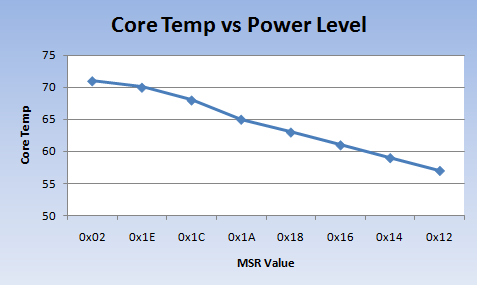yes, assuming full load, stock cooler, stock vcore, stock clock, exact intel loading program, and reasonable ambients. Intel states under those conditions, throttling is set to occur (tjmax reached) just as tcase is exceeded. Also depending on type loading program that gradient can vary significantly even at same temp, which is why intel goes on to say in docs that the relationship is not guaranteed.
And of course if you cheat and remove cooler to get temps that high at idle, then relationship no longer true and tcase = tjmax - 5C. When overclocking and different cooling, I am sure significant gradient exists...but likely different in some ways...just dont know how much.
Also in your other post, under Temp #1 you switched temps on cpu and junction, also my cpu temp reads 2-3 too low at idle temps, and I think you meant to say Tjunction/cpu gradient instead of Tcase/cpu gradient at end of each...but thanks for summarizing, saved me some typing





 :
:
 Reply With Quote
Reply With Quote







 Prime95 small FFTs.
Prime95 small FFTs.





Bookmarks